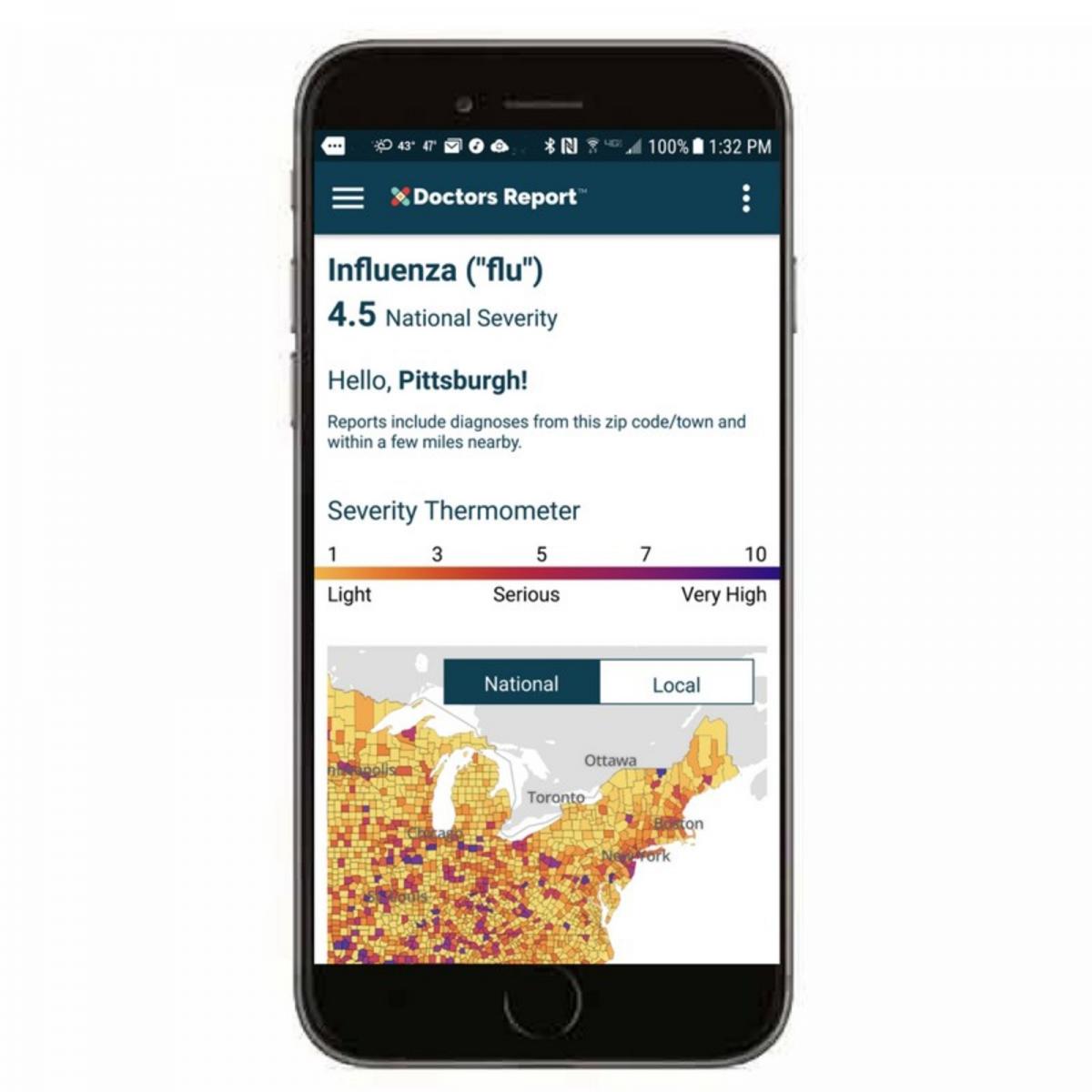 With influenza running rampant and several other infections waiting in the wings, some may be interested in knowing whether a specific disease is common in their community. With the recent release of the free Doctors Report Illness Tracker, the public has another resource where they can easily check how often doctors have reported a selection of 15 diseases within a specific US zip code.
With influenza running rampant and several other infections waiting in the wings, some may be interested in knowing whether a specific disease is common in their community. With the recent release of the free Doctors Report Illness Tracker, the public has another resource where they can easily check how often doctors have reported a selection of 15 diseases within a specific US zip code.
“Doctorsreport.com [is] a website and mobile app that gives users access to real doctors’ report data from across the nation so they can track health risks where they happen, and when they’re happening,” Dan Shaw, CEO of Knox Spencer Associates and the service’s creator, said during an online conference call. “The information is accurate and timely, and puts the most current reliable information on current spreading or infectious health risks to common illnesses in the pockets of millions, thanks to its simple, intuitive, and trustworthy data … from doctors’ reports generated in more than 900,000 doctor’s offices across the country.”
Available on the App Store, Google Play, and Amazon, the service gives users a localized disease incidence score derived from the number of diagnosis reports submitted to payors by physicians, Shaw explained. By typing in the desired zip code, users will see color-coded incidence within their region and others nearby alongside graphs displaying prior incidence severity rates. Because physicians often report these cases promptly, the service can receive and compile its data more quickly than other, more regimented surveillance data sources.
“Whenever the physician is reporting up the chain to the payor … that data heads up the chain and that’s where our supplier grabs it and provides it,” Shaw said. “So, actually, when we get our data, it can be within 48 to 72 hours, although we compile it and maintain it until it is a sufficient size to be usable, and then we report it.”
While Shaw contended that his company’s diagnosis-based data is more accurate than those obtained through other alternative surveillance methods, such as passive analysis of social media posts, he noted that data collected by the CDC or other government agencies is more in depth and often includes measures of severity. Still, he said, having diagnosis frequency data accurate within a week fills a niche.
“The CDC also reports on the mortality and hospitalizations, so that’s another way to look at it — how severely ill a group might be,” he said. “So, I think, you might look at it either way, and public health officials might look at it either way, but the service we provide is telling you how many people are out there with that illness near you, and trying to guide you to avoid that illness if you can.”
Alongside the incidence graphs and map displays, Doctors Report also delivers health alerts, various prevention tips, age-specific data, and regular disease news to its users. In the future, Shaw said that his team will be looking to add other features to the service as well as tracking for additional diseases.


















